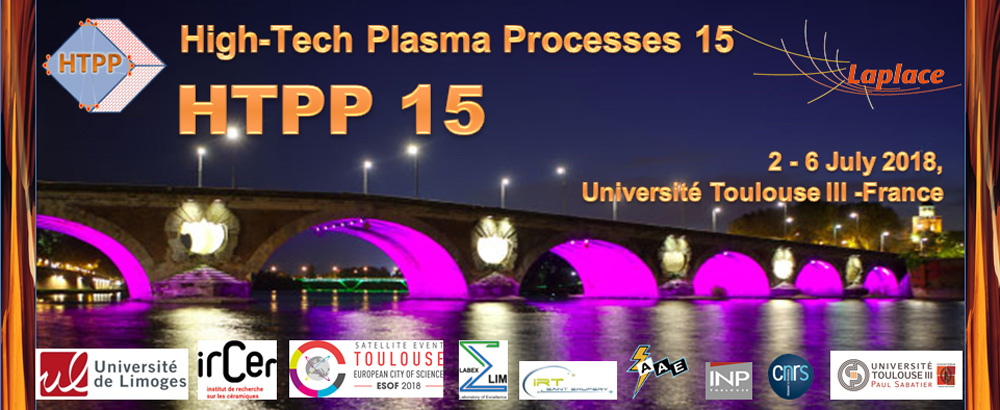Radio frequency (RF) inductively coupled plasma (ICP) has demonstrated its ability to produce a great varieties of high purity ultra-fine nanoparticles, and has recently been considered for graphene nano-flakes (GNF) production by injecting CH4 precursor into Ar and H2 mixure (Ar/H2) plasma. Although theoretical modelling based on fundamental theory and computational fluid dynamics (CFD) has been made to describe the growth mechanism of GNF, experimental studies on in-situ investigation of induction plasma to understand chemical kinetics of precursor dissociation have not been discussed in detail. We have considered CH4 and C2H2 as precursor and compratively examined Ar/H2/CH4 and Ar/H2/C2H2 induction plasma by optical emission spectroscopy at different synthesis process conditions such as pressure, plate power and CH4 or C2H2 flow rate. The optical emission spectra of both Ar/H2/CH4 and Ar/H2/C2H2 plasma contain emissions from C2 Swan system, CH and C3 radicals which indicate similar pathways for precursor dissociation. The preexisting electrons and atomic hydrogens in Ar/H2 plasma leads to the dissociation through electron impact and dehydrogenation processes. Furthermore, C2 species are generated due to the energy transfer from the excited state argon atoms (Ar*) to the hydrocarbons resulted during dissociation containing C2 and less number of hydrogen such as C2H2 and/or C2H. Besides C2, CH and C3 radicals, a broadband continuum emission is observed in Ar/H2/CH4 plasma emission spectrum at appropriate growth conditions which is an indicator of the particle formation in the vapor phase. For example, at plate power of 15 kW, pressure of 400 mbar and CH4 flow rate of 0.7 slpm, C2 Swan system dominates the emission spectrum with absence of continuum emission that is consistent with no GNF production. At plate power of 15 kW, pressure of 700 mbar and CH4 flow rate of 0.7 slpm, continuum emission dominates the emission spectrum where GNF production rate is 16 mg/min. At 400 mbar, lower thermal gradient in plasma causes no production of GNF. In this condition, C2 species are believed to be converted into hydrocarbons by collision with the hydrogen molecules without producing any allotropes of carbon. The production of GNF is observed at 700 mbar due to condensation of C2 species caused by higher thermal gradient in plasma through homogenoeus nucleation where condensation rate sufficiently exceeds the evaporation rate that causes higher supersaturation and formation of stable particles. At optimized growth condition, the maximum GNF production rate achieved is 165 mg/min. C2H2 is injected under same condition as that of CH4 i.e. at plate power of 15 kW, pressure of 700 mbar and C2H2 flow rate of 0.7 slpm and the corresponding emission spectrum of Ar/H2/C2H2 plasma is analyzed. Careful comparison of emission spectra between Ar/H2/C2H2 and Ar/H2/CH4 plasma reveals that C2 Swan system dominates the emission spectrum of Ar/H2/C2H2 plasma where continuum emission is absent that is consistent with zero production. On the other hand, continuum emission dominates the Ar/H2/CH4 plasma emission spectrum. The C2 vibrational temperature is 6200 K in Ar/H2/C2H2 plasma which is much larger than that of 3500 K in Ar/H2/CH4 plasma. The higher C2 vibrational temperature in Ar/H2/C2H2 than that in Ar/H2/CH4 betokens that less energy is consumed in dissociating C2H2 than CH4 to result C2 species which supports the concept of aforementioned energy transfer process from Ar* to C2H2 and/or C2H.

|
Understanding chemical kinetics of CH4 and C2H2 dissociation by optical emission spectroscopy during graphene nano-flakes production in an inductively coupled plasma reactor
1 : EMPA – Swiss Federal Laboratories for Materials Science and Technology, Laboratory for Advanced Materials Processing, Feuerwerkerstrasse 39, CH–3602 Thun, Switzerland
|
 PDF version
PDF version
